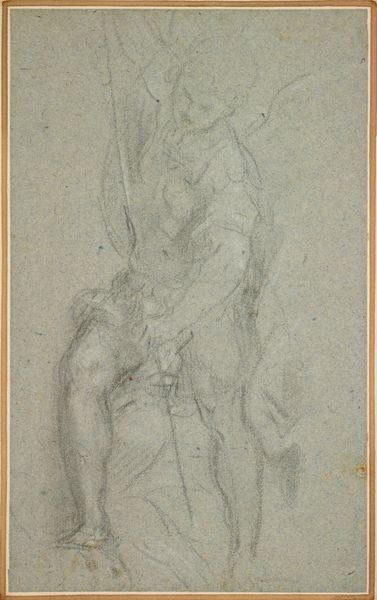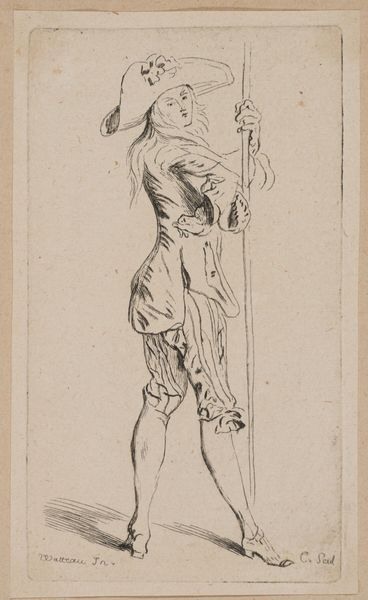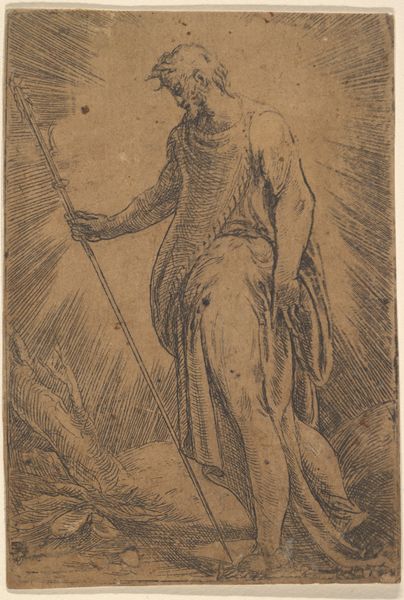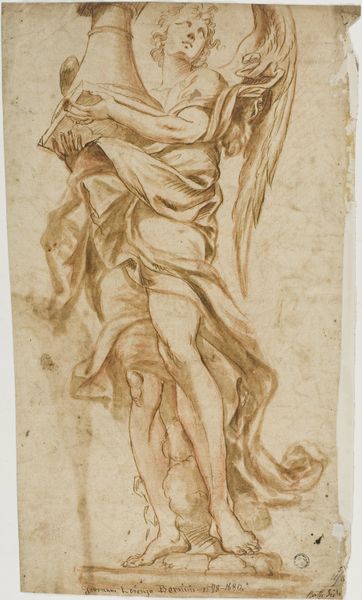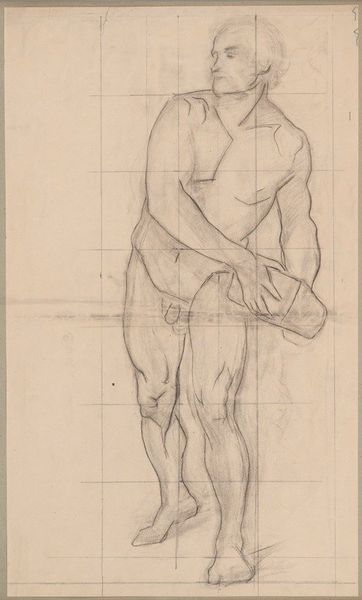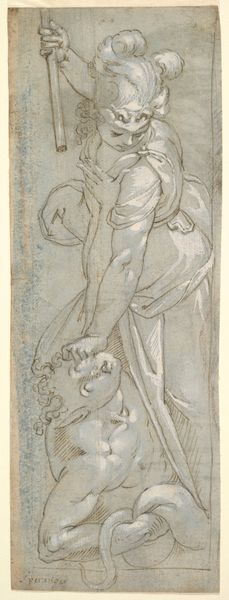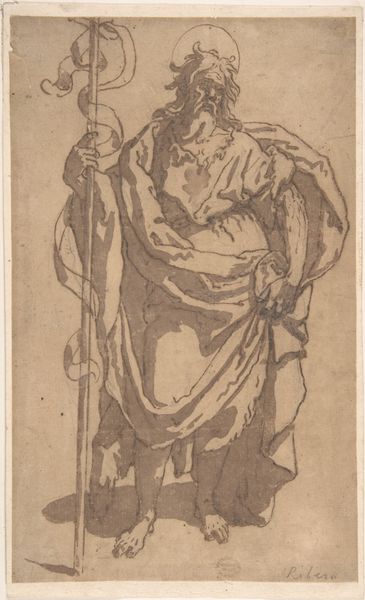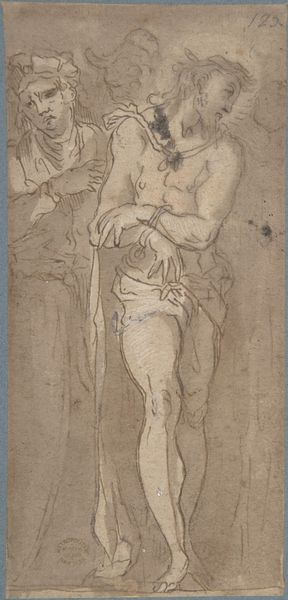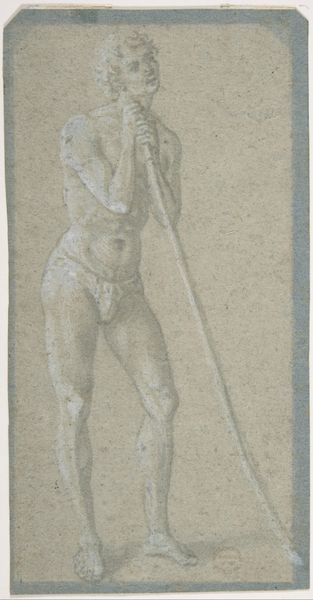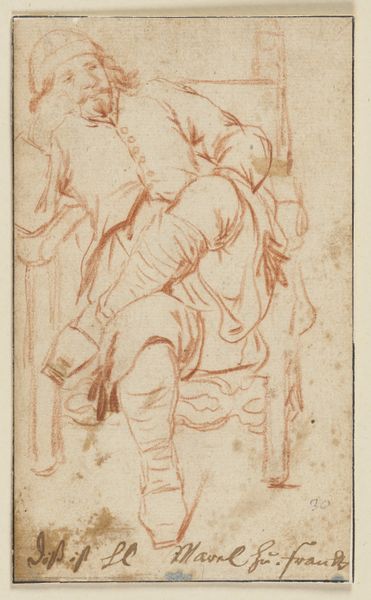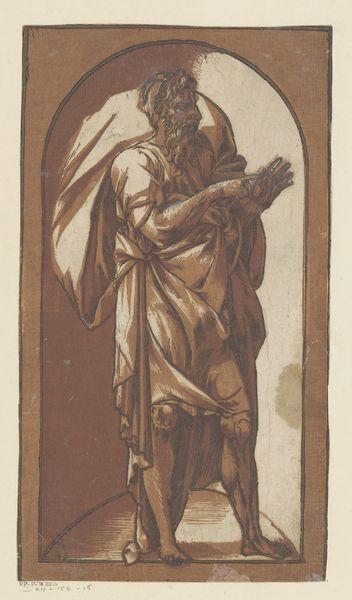
drawing, print, charcoal
#
portrait
#
drawing
# print
#
charcoal drawing
#
mannerism
#
figuration
#
portrait drawing
#
charcoal
#
history-painting
Dimensions: sheet: 15 5/16 x 6 5/8 in. (38.9 x 16.8 cm)
Copyright: Public Domain
Curator: Paolo Farinati, working somewhere between 1535 and 1606, rendered this work, "A Man Resting on a Staff," with charcoal. The piece now resides here at the Metropolitan Museum of Art. Editor: It projects a certain contemplative mood. He’s sturdy but also weary. What catches my eye first is that the man's gaze is directed away, seemingly lost in thought. The staff suggests both support and perhaps the weight of something carried. Curator: The interesting element, here, for me is the deliberate archaism in Farinati's figuration. There's a consciousness of classical sculpture and a knowing deployment of it. This stance, almost theatrical, serves as a claim to legitimacy and a connection to inherited power structures of that classical past. Editor: I'm struck by the way the charcoal highlights accentuate his musculature and draped cloth, and also give an expressive, shadowed appearance to the work overall. The staff is an attribute, of course. Do you think it’s intended as a scepter, a symbol of authority, or more literally a walking stick, implying pilgrimage or journey? Curator: Probably both. Symbols don’t have single meanings, right? The staff operates as both literal support, as a humble cane, while visually invoking those associations of power and the implied stability of leadership. I wonder, though, if the ambiguity is a commentary. The staff supports him, but to what end? Editor: Yes, this really reflects Mannerism: an intentional manipulation of proportion and exaggerated anatomy. I almost wonder if there is social critique being made, and perhaps the knowing, distant gaze hints at it as well. What is the overall statement of this piece, in your opinion? Curator: In this depiction, he seems like he’s on the margins. The artist seems to be challenging norms, offering perhaps a subtly subversive image through a classical form. He isn't actively leading or dictating, but rather resting, waiting... assessing. The image leaves the specifics to the viewer. Editor: I agree entirely. I’d just add that the symbolic nature of the materials used to realize the portrait adds an essential component as well: this character has been hewn through humble materials of print, pencil, charcoal; and that he projects through time to still capture our attention in this very room.
Comments
No comments
Be the first to comment and join the conversation on the ultimate creative platform.
